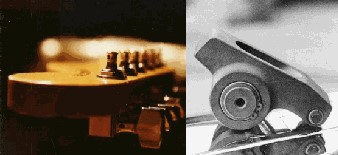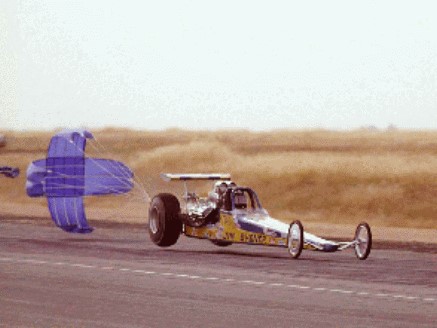



What does all this mean? It means with too small of a camshaft your engine will not make as much horsepower and is prone to self destruct in a lack luster way. If the camshaft is “too big” on a street tire, this torque reduction will reduce wheel spin which may be beneficial. At high R.P.M. the engine with too big a cam, if there is such a thing, with the piston being the limiting factor, will run hard and adding too big a carburetor will add to this effect as well, reducing low engine speed torque and adding high R.P.M. horsepower. This concept is the most important information. Remember I said the camshaft is the brain of the engine that decides the engines capabilities. I will try to re explain it again in a different way because it is so important to understand. The octane of the fuel limits the amount of cylinder pressure that can be generated until the fuel detonates before the ignition fires the spark plug. If the fuel detonates too early before the spark plug fires, combustion works against the piston trying to make that cylinders piston reverse direction or run backward. Since all the pistons are connected via their connecting rods to a common crankshaft this is impossible and the crankshaft forces the piston to continue thrusting up to top dead center causing the damage. It is irrelevant how cylinder pressure is achieved. Superchargers like the ones used on top fuel engines known as “blowers” are air pumps driven off the crankshaft that force air into the cylinders. Turbochargers, also called hairdryers because of their similar appearance to hand held hairdryers used in beauty parlors, also force air into the cylinders but are driven by the exhaust gases. This article is about building a normally aspirated engine which gets all it’s cylinder pressure from the static compression ratio of the piston, and the dynamic cylinder pressure created by the lift and duration specifications of the camshaft. Engineers want you to under cam and under carburet, because they were formally educated and were brainwashed to do things by mathematical formula not by experimentation. They simply take the engines capacity in cubic inch displacement and multiply that, times the engine revolutions per minute, and come up with a figure for the amount of cubic feet per minute of airflow required to supply the engine with enough fuel and air. Then they adjust for volumetric inefficiencies to try to convince you to go smaller still. I used a 750 cubic feet per minute air flow carburetor as an example. What they don’t take into consideration is phenomena or the unexplainable events that occur as observed, not calculated. As you increase camshaft lift and duration, you decrease static actual cylinder pressure, because the longer both the intake valve and exhaust valve are opened simultaneously, called “valve overlap”, the more opportunity the incoming fuel and air has to just go out the exhaust port, and the exhaust gases has to reenter the cylinder. This causes the cylinder to misfire and create that beautiful sound we all know and love of a rough, or nasty idle which defines Hot Rodding. The exhaust gases can actually enter the intake port. This is where the phenomena or the unexplainable events occur as observed, not calculated, which I am trying to explain to you, the unexplainable. So try to understand. As engine R.P.M. increases the momentum of the incoming fuel and air becomes massive. Physics, that which is in motion remains in motion until a valve starts to close. At high R.P.M. the air, fuel mixture rushes into the combustion chamber and starts compressing itself astonishingly enough. Like a bunch of people late for the party smashing into an elevator so their not late. The bigger the elevator
door and the longer the door stays open the more people can figure out how to stuff themselves into the elevator. The bigger the carburetor, the more air and fuel that can theoretically enter the engine up to the capacity of the airflow rating of the carburetor. A big capacity carburetor or even way too much capacity, by mathematical definition, allows the camshaft and resonation phenomena to limit the capacity of the engines airflow capabilities, not simple mathematical formula. The laws of physics come into play at this point to aid your understanding. That which is in motion remains in motion until an outside force acts upon it. At a certain R.P.M. their occurs a phenomena which is referred to as resonating. What this means is the carburetor, intake manifold, cylinder heads, camshaft and exhaust headers, start to flow air through the engine at greater than volumetric mathematical efficiency, and this is where the engine stops misfiring and runs on all eight cylinders and goes berserk. At this point if you were to hold the throttle at a certain position the engine will take off on it’s own and wants to continue revving higher and higher. On paper this appears as a dramatic rise on a chart of torque and horsepower. In a sentence, this third way I can explain the phenomena, is the cylinder pressure increases at certain R.P.M., which is why I called it dynamic cylinder pressure, and continues until a certain R.P.M. where upon it stops increasing and the horsepower falls off. Generally this occurs at higher R.P.M. with a camshaft with a longer valve opening duration and higher lift. This way you can use a higher numerical gear, which is a lower top speed ratio. Your acceleration will increase, due to mechanical leverage, and high R.P.M. potential of the big cam will make up for your loss of top speed due to the gear ratio. Your going to want about a 4.10 or a 4.56 gear ratio if your vehicle is to see street use. If you currently have a lower numerical gear like a 2.73, which is a higher top speed ratio and you change to a 4.56 gear set, boy oh boy is that going to wake you up. Your throttle response is going to be tremendous.
If you have a camshaft with a nasty rough idle and an automatic transmission, you are going to need a high stall speed converter, with a bare minimum of 2500 TO 3000 R.P.M. for a big block, 3500 to 4000 for a small block. You can go to 5000 stall, but on the street this is radical. The stall speed is the speed that the engine will rev to before the converter “locks up” or achieves a point, whereby the R.P.M. of the engine is closest to the R.P.M. of the transmission input shaft. It does not mean that the car will not move until the stall speed is reached. Generally the bigger the engine the lower the stall speed you need on a street tire. Larger engines make more torque, so you need less torque converter stall speed. If you can grasp this part of my article, regarding the relationship between camshaft lift and duration, static and dynamic compression, rear end gear ratios, carburetor size, and torque converter stall speed, your home free. If you cannot grasp it, sleep on it, read it a few more times and one day it may just dawn on you. It is really like guitar feedback which is why I understand it. The guitar pickup sends the signal to the amplifier and the speakers amplify the sound whereupon the guitar pickups pick that up too. When this reaches infinity in electronics it causes a circuit to burn out. The engine starts resonating, achieving more than volumetric efficiency so it revs faster and faster, limited only by the valve trains ability to follow the camshaft profile and the engines point of coming apart due to centrifugal force which overcomes the strength of the reciprocating and rotating parts, whereupon the engine explodes, hence the need of an electronic limiter to limit engine R.P.M.. The Rev Limiter stops the spark plugs from firing above the R.P.M. chosen.
Valve springs and the type of camshaft effect the engine R.P.M. capabilities. There are several types of camshafts being made, listed in order of their R.P.M. potential from lowest to highest: Hydraulic lifter, Hydraulic roller lifter. Mechanical solid lifter, Mechanical Roller lifter. Contrary to what some people would have you believe a roller lifter camshaft is not exactly an instant enormous horsepower increase, and in fact a mechanical solid lifter, if your engine can run one, may actually be the best choice and here’s why. Roller lifters, like so many other things were born on the drag strip. When nitro methane dilutes the oil as it enters the crankcase, as the fuel air mixture gets by the rings, due to the supercharger increasing the cylinder pressure beyond the piston rings capacity to seal, a solid lifter camshaft is wiped out by the lack of lubrication and the enormous valve spring pressure required for high R.P.M. to keep the lifter following the camshaft profile. Without the enormous valve spring pressure the valves would float and strike the pistons causing engine failure. Bigger valves flow more air generally, and make more power, but weight more decreasing the R.P.M. at which valve float occurs. The mechanical roller lifter camshaft was originally designed to solve these problems as follows: The camshaft and roller lifters are made of hardened steel. The rollers reduce the amount of lubrication required, reducing friction and oil temperature. The valve float problem was solved with a rev kit as follows: The reciprocating weight of the roller lifter is removed from the responsibility of the valve spring. The rev kit places springs between the underside of the cylinder head and the roller lifters to achieve this. The rev kit spring forces the roller lifter to follow the camshaft profile. The valve spring then only has to deal with the reciprocating mass of the pushrod, rocker arm and valve, split keys and spring retainer.

